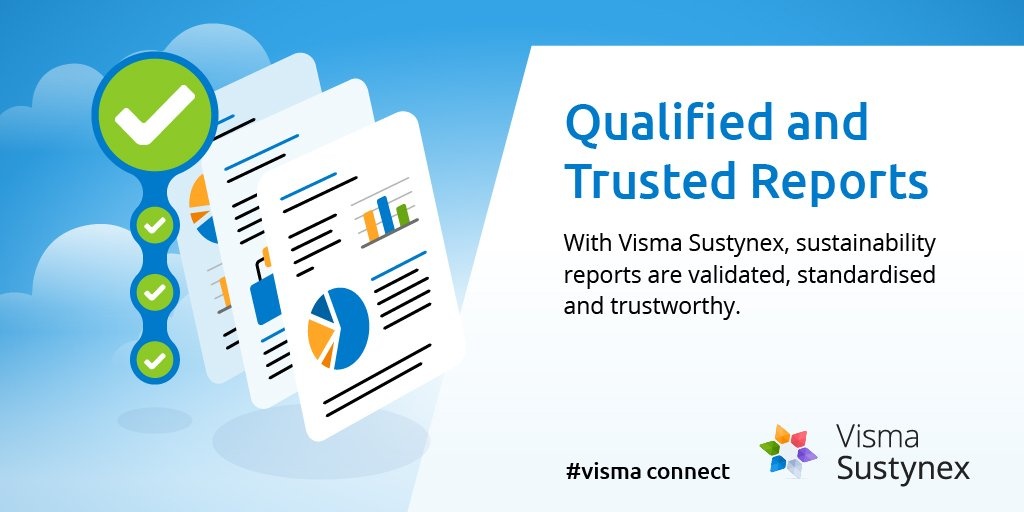Applying Taxonomies in Sustainability Reporting
A Q&A with Aimée Latuheru
Anyone who has compiled information for a sustainability report knows that it’s a work-intensive process. Some companies decide to forgo sustainability reporting altogether, in part because it’s difficult to do. However, with the EU’s Non-financial reporting directive - which came into effect in 2018 - and public concerns over climate change increasing, failing to report on your sustainability targets is no longer an option.
What if we could make sustainability reporting easier? We spoke with our colleague Aimée Latuheru to find out how taxonomies can help. Taxonomies play a critical role in streamlining digital financial reporting and Aimée is an expert in the field. Aimée has more than ten years of experience in accounting and financial controlling. Recently, she’s been dedicated to analysing the law and regulations for the Dutch taxonomy for accounting statements. Aimée is also part of the team within Visma Connect that’s developing the taxonomy for Visma Sustynex.
Aimée, before we delve into sustainability reporting, can you explain what a taxonomy is?
Happy to. A taxonomy is a dictionary with data concepts (definitions) that can be used to create a financial report. The relationships between data concepts are also defined within the taxonomy. In financial reporting, we use taxonomies to make it easier to analyse and compare reports. This shared dictionary makes it possible to easily share data, with clear definitions, between a sender and receiver. It also makes it possible to trace the data to underlying documentation, such as standards and regulations.
How do you build this and what’s the foundation?
All taxonomies are created based on the type of information a requesting party needs, and these needs are usually determined by laws and regulations. For the most part, requesting parties are government bodies. For example, tax offices or chambers of commerce. To build a taxonomy, we start by mapping existing terms. These can be national, regional or global. The standard we use to build financial taxonomies is XBRL. This is an international standard for business reporting that is used in more than 50 countries. It standardizes specific data concepts, like disclosures, dates, monetary values and all sorts of data. XBRL is a machine-readable language based on XML.
Can you give an example?
One of the largest taxonomies we have developed is used by organisations in the Netherlands to file their financial statements in the chamber of commerce. As of 2019, all legal entities in the Netherlands must use the XBRL format to report their financial statements. The taxonomy is based on Dutch law and regulations. It’s the largest financial taxonomy we have in the Netherlands. It standardizes data concepts like tangible assets, intangible assets, disclosures, and concepts in profit and loss accounts (costs, revenues, and more).
In this particular case, we also created entry points, which are forms organisations can use to file their reports. The forms that organisations use vary depending on their size - large, medium, small or micro. The size of the organisation depends on the assets, net revenue and average number of employees. So, in short, we make it very easy for all kinds of organisations to file their financial statements following the taxonomy.
What are the advantages and disadvantages of using taxonomies?
Let’s start with the advantages. When you use a taxonomy, data is more structured and standardised. So, comparisons between reports are easy to do and data can be shared more easily between organisations. Data concepts can also be used in other taxonomies, so you can potentially use the information for many purposes. It’s important to note that data and the relationships between data can be validated as well. This makes reporting more effective and accurate than paper-based reports. Information is instantly available.
Now, the disadvantages. Because the use of XBRL is relatively new, many users are not fully comfortable with the fact that it's only machine-readable. So, there’s a change management aspect to consider. Companies also need to invest in software, but the advantages definitely outweigh the cost. In some countries, like the Netherlands, it’s required to use the XBRL taxonomy, so it’s also not an option to postpone the investment.
Let’s turn to how taxonomies can be applied in sustainability reporting. Are there important developments taking place in this field?
Generally speaking, sustainability is becoming a more important topic. There’s never been a better time for organisations to start using a taxonomy to benchmark and report on their progress.
One big development in the industry is that SASB (Sustainability Accounting Standards Board) and GRI (Global Reporting Initiative), the organisations that created the two biggest standards used for non-financial reporting, have announced a collaboration. It will be interesting to see what that results in, and how it impacts sustainability reporting. Another development is that reporting standards per sector will be included in GRI standards by 2024.
Visma Connect is developing a taxonomy for sustainability reporting. What is the difference between this taxonomy and the taxonomies you normally design?
Most taxonomies we have developed are financial. This new taxonomy provides definitions for sustainability disclosure, so it deals with concepts surrounding energy, environmental factors and other sorts of items companies need to include in their sustainability reports. Think of CO2 emissions and measures taken to reduce them, energy sources (whether they are renewable or not), energy intensity, energy sold, and so on.
What is the basis of this new taxonomy?
We based the taxonomy on GRI standards. We used the reporting requirements defined in GRI and translated them into data concepts. There are a lot of reporting requirements in GRI that could be easily translated into a taxonomy, so that’s why we chose this standard. It was the best fit for developing a taxonomy for sustainability reporting.
How will this taxonomy help companies?
Currently, it’s not that easy to compare sustainability reports because of the way they are built. Most of the time, they are presented as a PDF. In most cases, companies use very different concepts to report on their sustainability initiatives too. This taxonomy will make it easier for organisations to benchmark their progress year-on-year, and it will make it easier to compare how different organisations are performing, as concepts will be re-usable and based on up-to-date standards.



